Midjourney: /describe me
A new addition to Midjourney, the AI image generating program, is the /describe command which reverse engineers a photo into an AI prompt. Instead of text to image, you get image to text.
Here’s the results of submitting three very different headshots, with the 4 separate ‘reverse prompts’ generated.
Quiet potency
- a man wearing glasses is smiling for a photo, in the style of light orange and dark green, quiet potency, anglocore, poolcore, glasgow style, mottled, rectangular fields.
- an older man wearing glasses, white shirt, and green shirt to smile, in the style of lucy glendinning, multiple filter effect, john higgins, light orange and light bronze, spiritualcore, photo taken with provia, steve argyle.
- a man smiling for the camera wearing glasses, in the style of light orange and dark green, ogham scripts, webcam photography, grandparentcore, crisp and clean lines, anglocore, abrasive authenticity.
- a man in glasses who wears glasses and smiles, in the style of light orange and dark green, steve hillier, keos masons, photo taken with provia, grandparentcore, steve argyle, crisp and clean lines.
I quite like ‘quiet potency’, not so sure about ‘abrasive authenticity’ and in the dark why ‘keos masons‘ was listed (as with all the photographers, designers, and artist names listed I had to Google this to even know what MJ was pointing to.)
Humanist, writer
- a man with glasses and jeans wearing a hat, in the style of poetcore, anglocore, grandparentcore, dark brown and indigo, photo taken with provia, quadratura, spot metering
- an older man wearing glasses and a hat, in the style of steve argyle, poetcore, max magnus norman, tony conrad, dark indigo and brown, dynamic and energetic, anglocore
- man in blue jeans is wearing glasses and a beanie, in the style of anglocore, realist portraiture, grandparentcore, grid, photo taken with provia, humanist, writer academia
- harry carver, author of, in the style of adrian donoghue, poetcore, tony conrad, light indigo and brown, george tooker, authentic details, stockphoto.
Again, ‘dynamic and energetic’, ‘writer academic’ resonates. Why ‘quadrantura’?
In fine art, the term quadratura describes a form of illusionistic mural painting in which images of architectural features are painted onto walls or ceilings so that they seem to extend the real architecture of the room into an imaginary space beyond the confines of the actual wall or ceiling. Although the term can apply to the illusionistic “opening up” of walls, it is mainly associated with Italian church fresco painting, notably that of the Baroque era.
Zen
- an old black and white photograph showing a young man with glasses, in the style of 1970s, flowing fabrics, feminist perspective, terracotta, cloisonnism, softly organic, uniformly staged images
- a man with glasses at a sink, in the style of pegi nicol macleod, queer academia, 1970s, alma woodsey thomas, studio portrait, zen buddhism influence, esther rolick
- a man in glasses sits on the floor with a towel at his feet, in the style of 1970s, bengal school of art, extremely gendered, women designers, bibliographic anomalies, silver, uniformly staged images
- man has his glasses on looking off into the distance, in the style of 1970s, queer academia, dorothy johnstone, photo taken with provia, bengal school of art, alma woodsey thomas
Spot on with ‘the style of the 1970s’ and I like ‘zen buddhism’. Not sure where the ‘towel at his feet’ came from.
Reverse prompts
These reverse prompts can, needless to say, then be fed back into Midjourney to create new images. These are all from the first prompt generated above, in the order shown, with just the text.
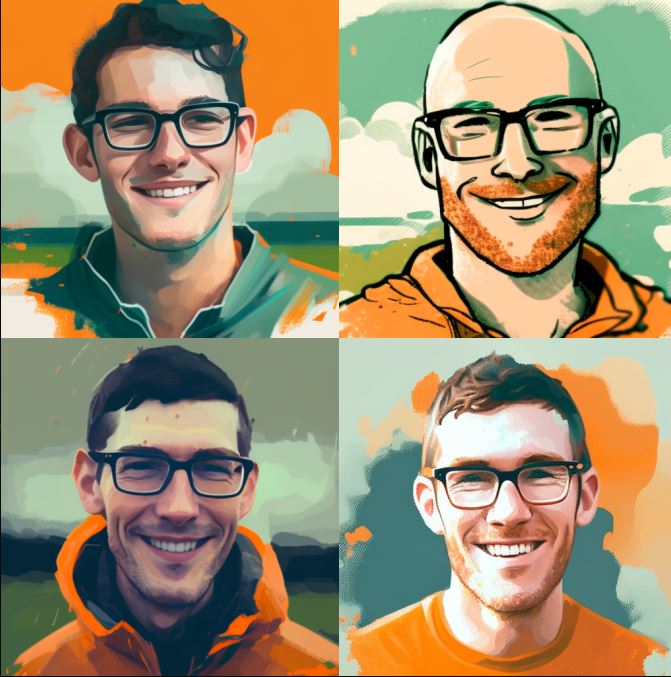
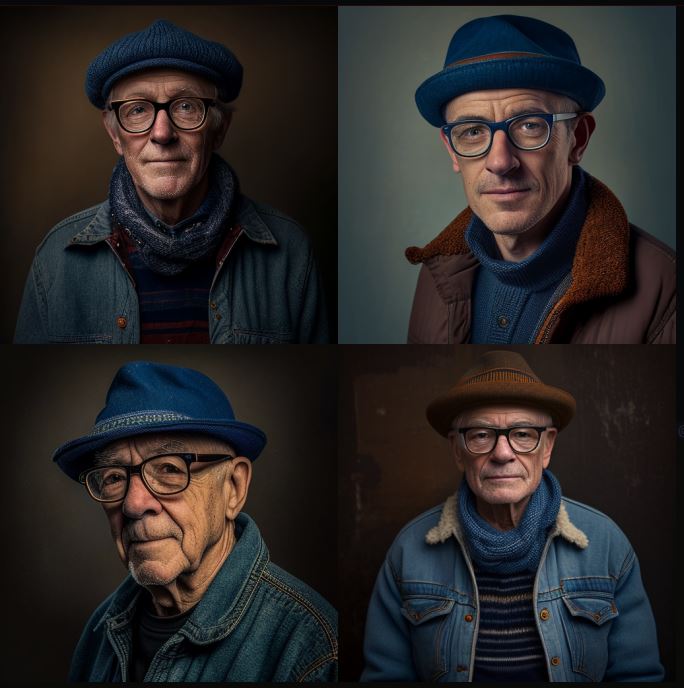
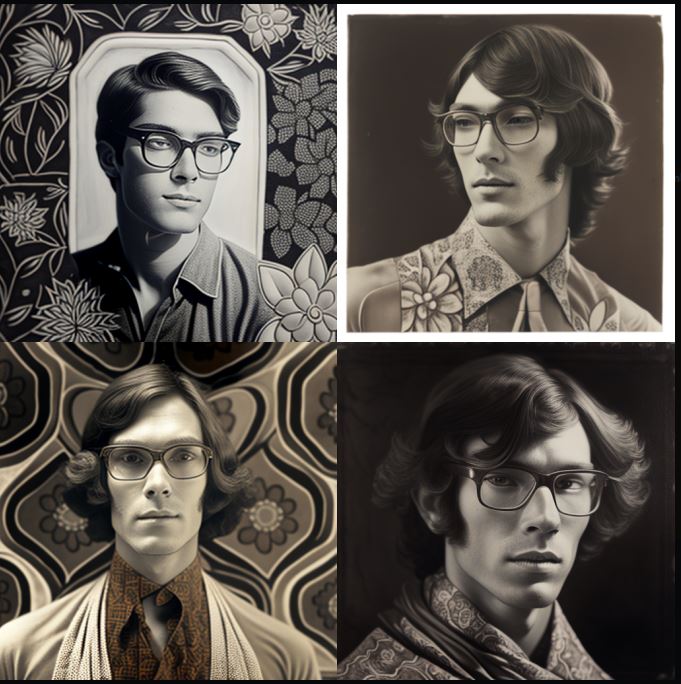
Feedback loop
Inserting the original picture into the prompt THEN adding the first block of text produces varied results, closer to the original.
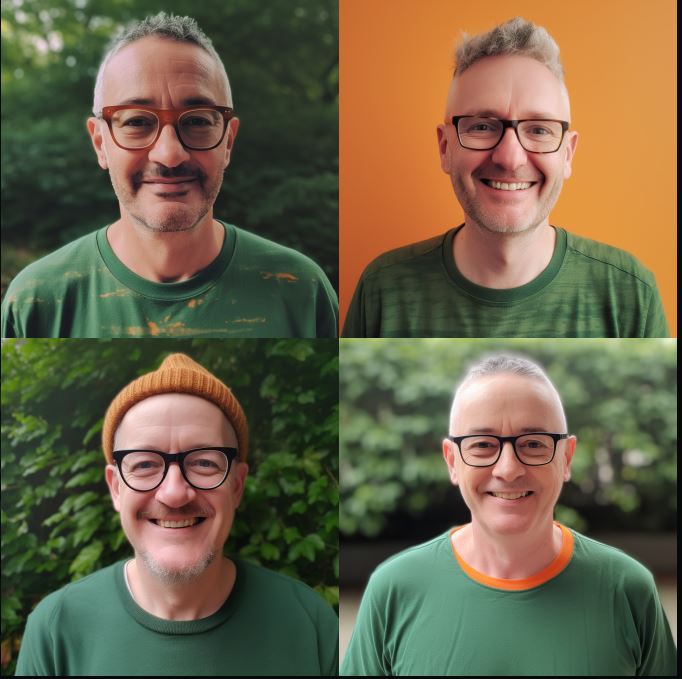
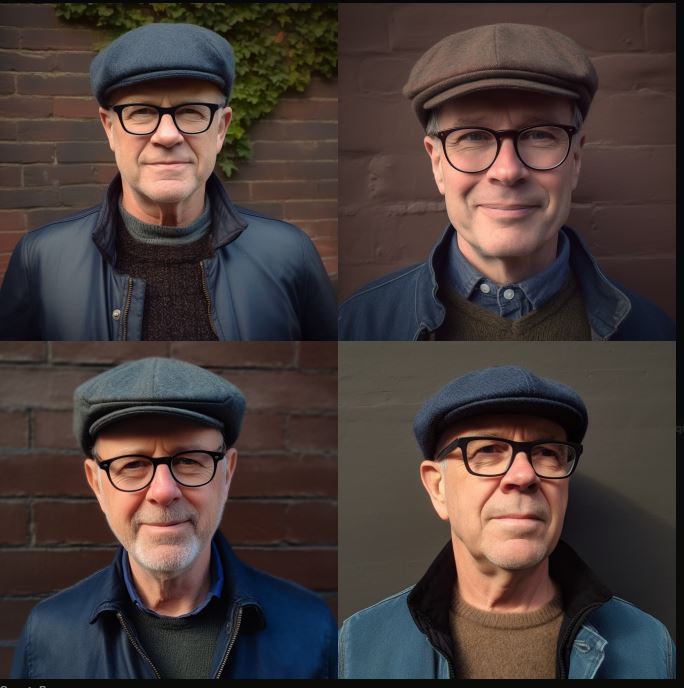
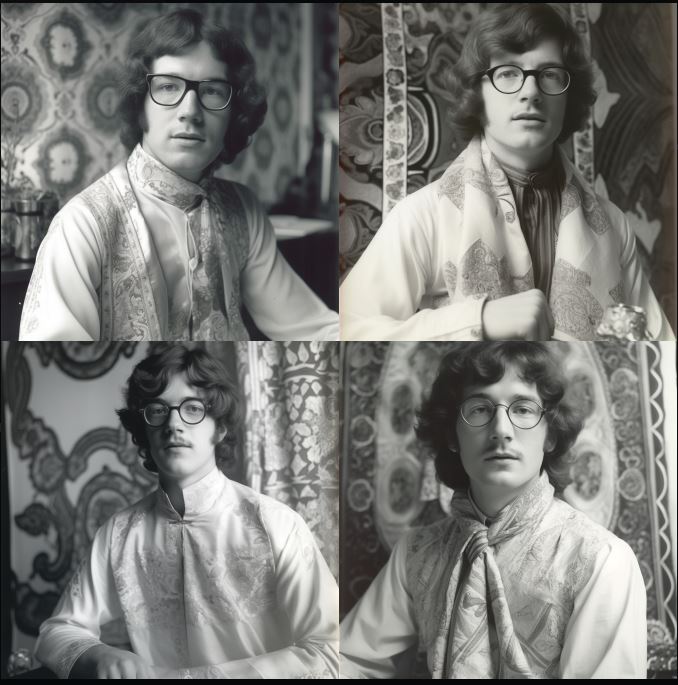




No Comments so far
Leave a comment
Leave a comment
Line and paragraph breaks automatic, e-mail address never displayed, HTML allowed:
<a href="" title=""> <abbr title=""> <acronym title=""> <b> <blockquote cite=""> <cite> <code> <del datetime=""> <em> <i> <q cite=""> <s> <strike> <strong>